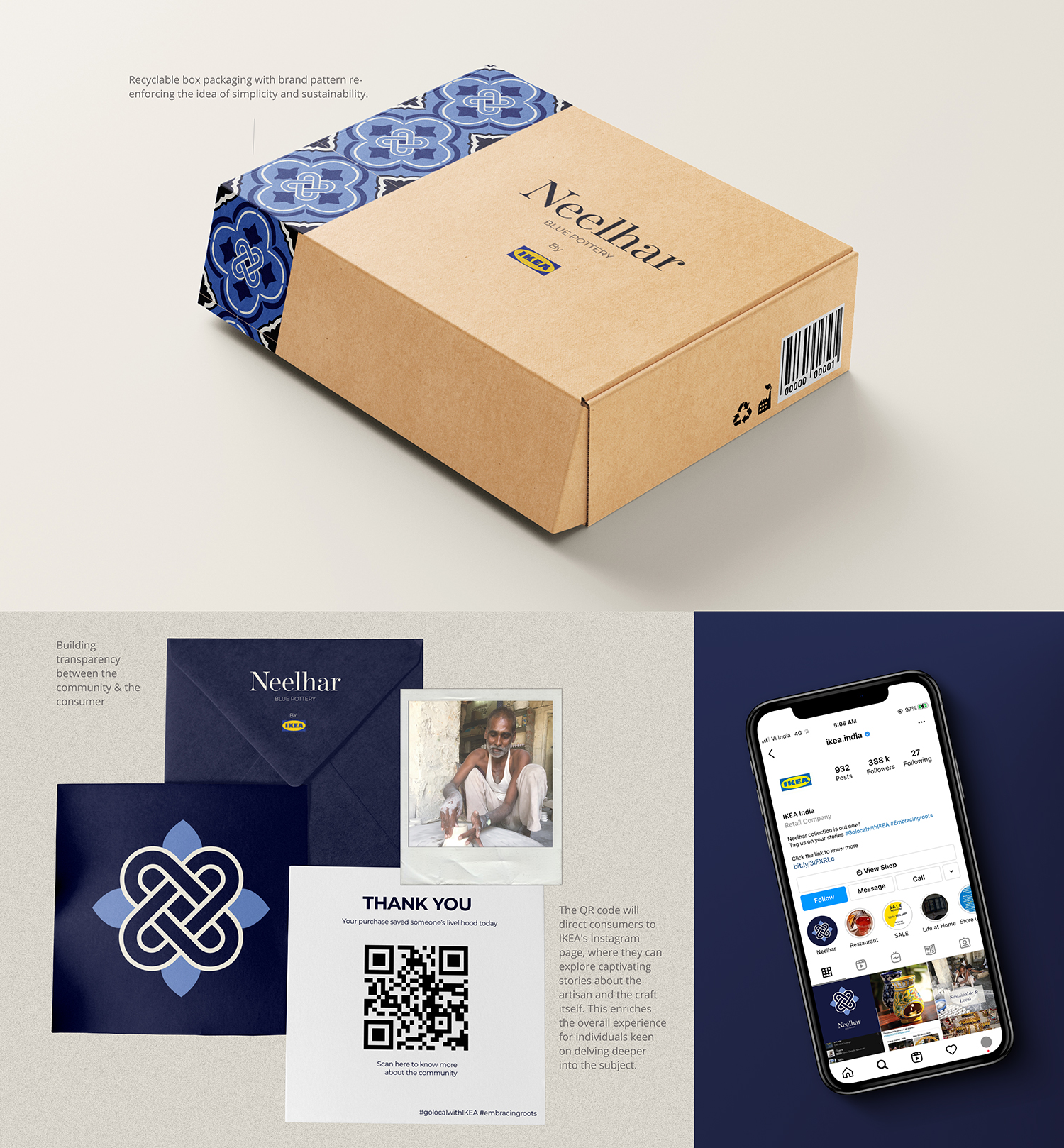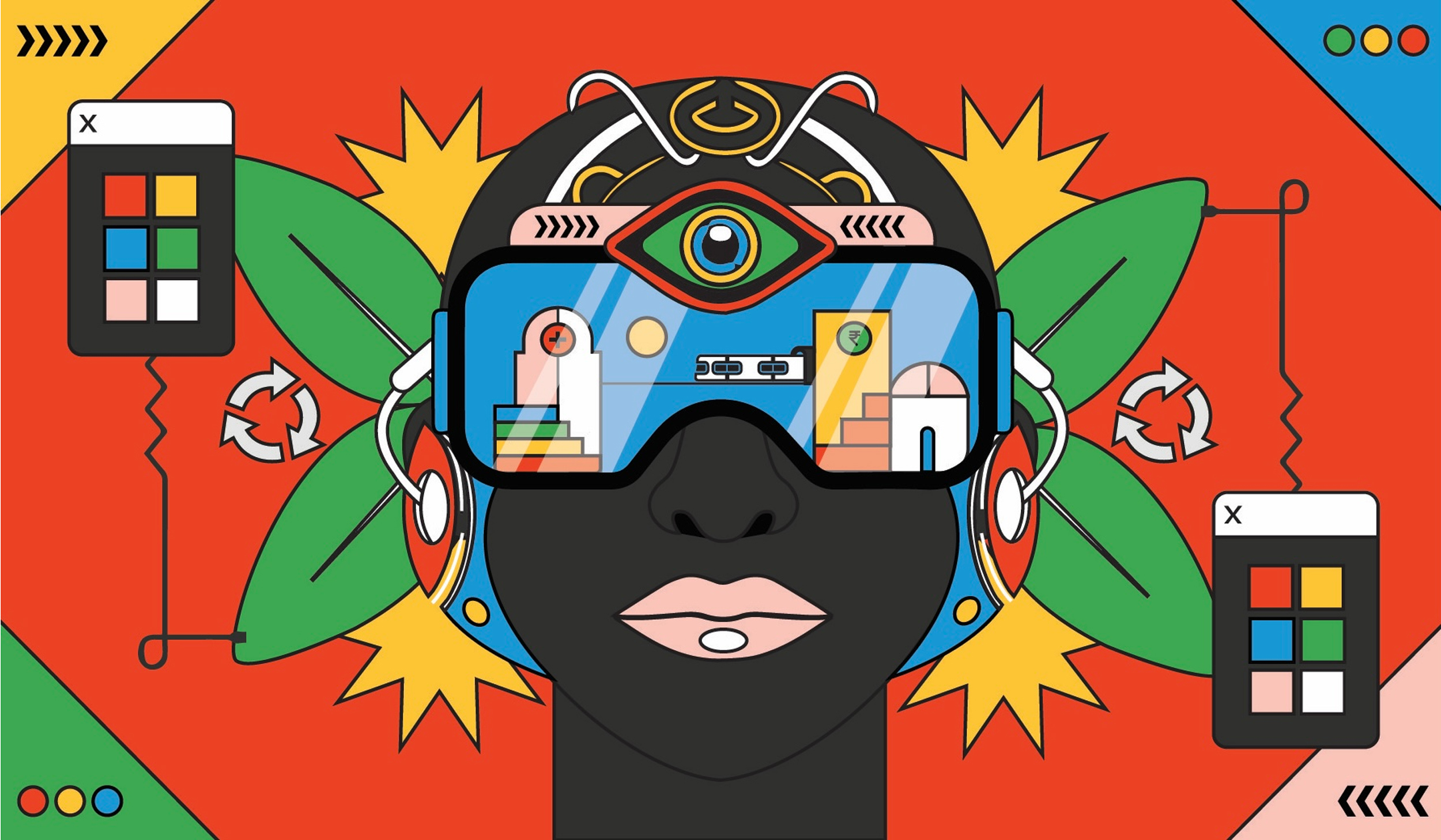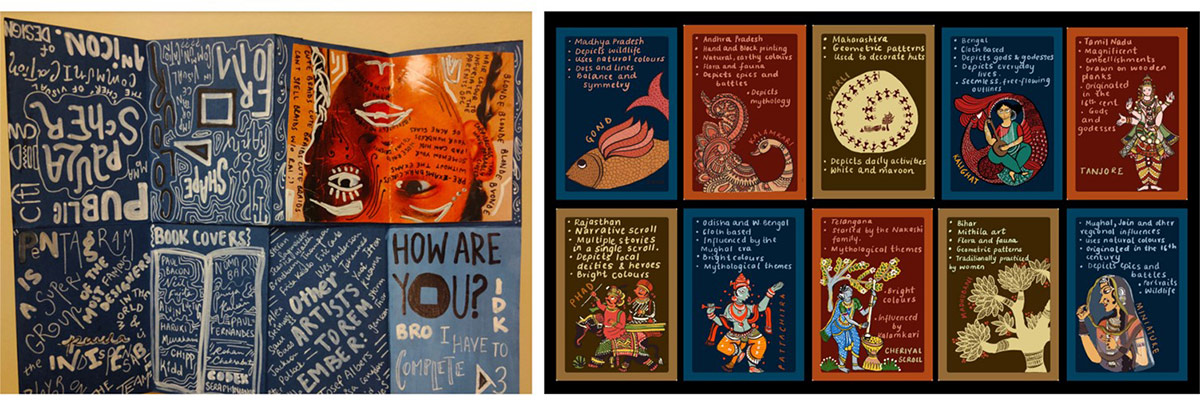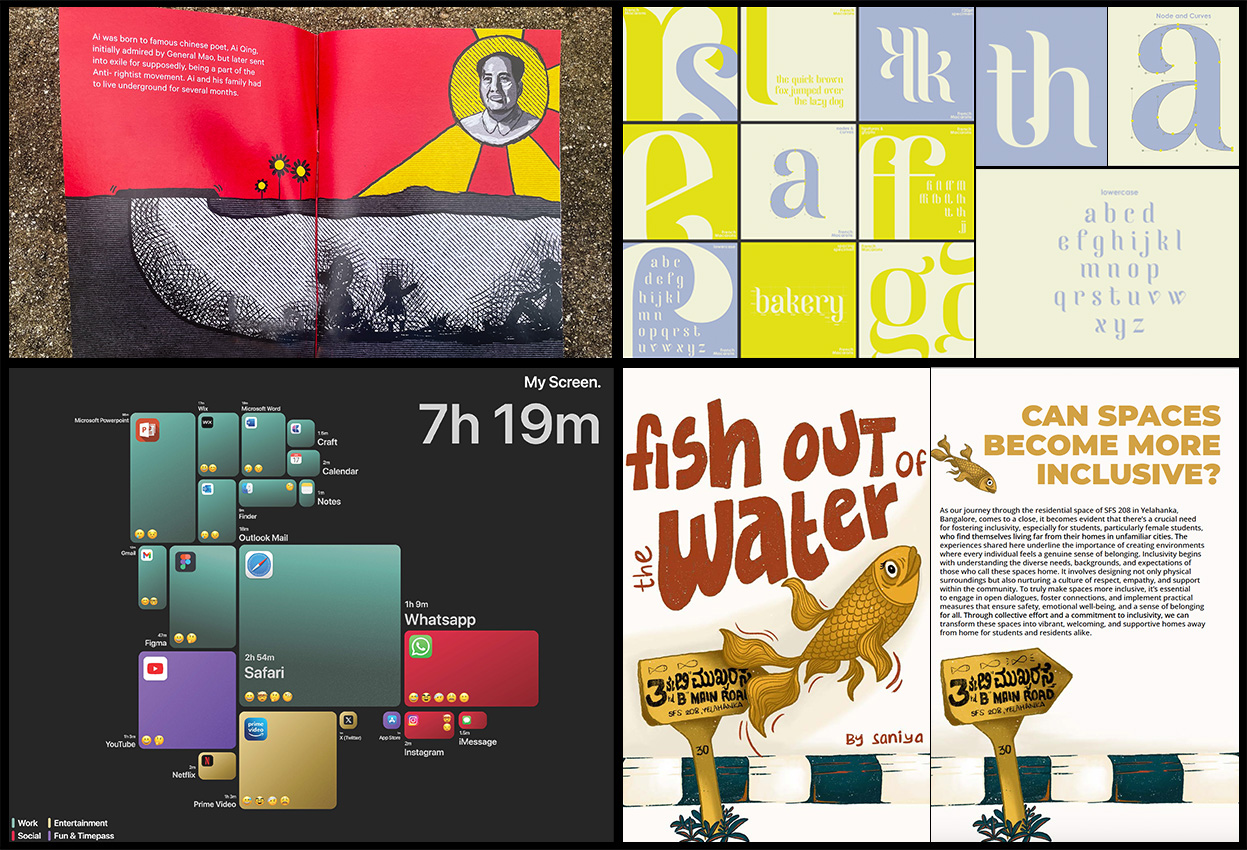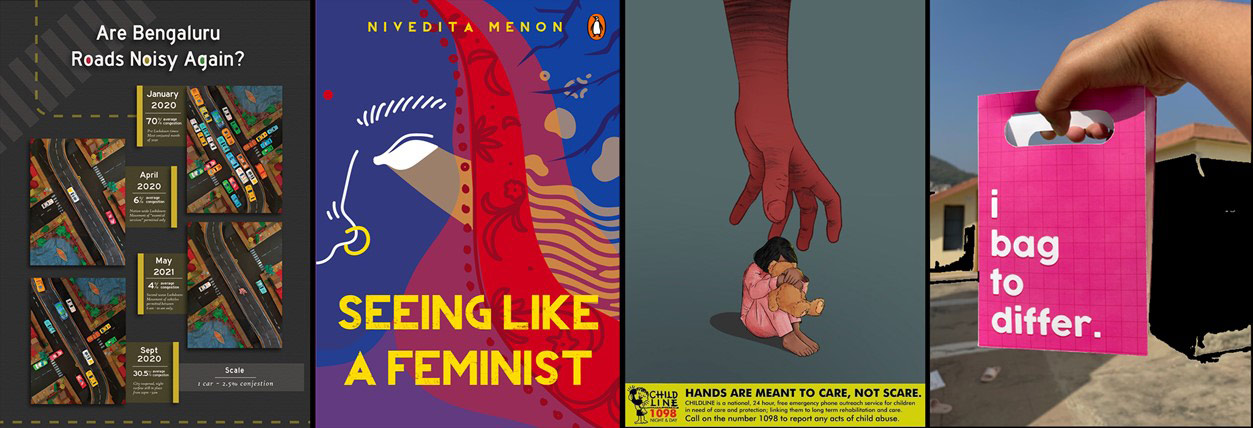Visual Communication and Strategic Branding
ABOUT THE PROGRAM
Design plays a crucial role in driving economic growth and cultural evolution. Modern designers must be able to collaborate and think critically to succeed. The Visual Communication and Strategic Branding (VCSB) course at the Srishti Manipal Institute teaches students to become socially aware professionals who can effect change through activism and advocacy. It provides a strong foundation in visual communication design, advertising, and branding, as well as elements of strategic design and design thinking. Students will learn design history and context, strong communication skills, and the ability to create and execute meaningful forms and messages using various media. Upon graduation, students may pursue careers in advertising agencies, design studios, NGOs, corporate communications departments, publishing houses, and the IT industry, including roles such as graphic designer, brand designer, packaging designer, and more. This course prepares students to make a meaningful impact in the world of design and communication.
VISION
Design is key to our economic growth and cultural evolution. A designer’s role involves both individual ingenuity as well as collaborative creativity. Designers can no longer function in isolation since today design is not just a creative and thoughtful activity but also a collaborative venture. In the Visual Communication and Strategic Branding course at the Srishti Manipal Institute, we also focus on educating our students to become engaged and socially aware professionals who become agents of change, engaged in activism and advocacy in the context of business, society, or environment.
This course is designed to address communication and marketing needs of variety of industry clusters across new as well as traditional mediums, materials, and platforms. Learning fundamental skills, design processes and conceptual thinking takes precedence over learning to use computer applications and software. Gaining wider historical and contextual perspectives, strategies and solutions, proficiency in communication and presentation skills, decoding and making meaningful forms and executing these forms and messages using various media are some of the objectives of this course.
We locate ourselves at the meeting point of business necessity and artistic value, where Integrity and personal expression of art meets the purposefulness of commerce supported by a genuine insight into people and the way they feel.
COURSE STRUCTURE
The curriculum comprises of different ways of learning as follows:
- Foundation introduces students to basic principles and tools of Art, Design and Technology as methods, tools and processes. Read more >>
- Disciplinary Studios are learning spaces where students develop core disciplinary capabilities, while navigating a trans-disciplinary environment
- General Studies is a common and compulsory programme of study that integrates Humanities, Sciences, Maths, business and finance. Development and Policy Studies and also offers Languages (Spanish, French and German) Read more >>
- Interim is an immersive introduction to practice in new and emerging areas of art and design and environmental exposure
- Electives are of three kinds – this program allows students to expand their skills, develop the interests as well as provide opportunities for travel exchange
- Internship/Apprenticeship is compulsory work experience done over the summer-break between the 6th and 7th semester
- Project based learning involves the application and synthesis of capabilities acquired. Two projects, pre-thesis and thesis, is culmination of the 4-year undergraduate program, which allows for demonstration of an integration of values, positions, capabilities and practice. Read more >>
LEARNING APPROACH
The curriculum covers various systems of knowledge and expertise in the discipline and related areas such as UX/UI design, printmaking, animation, illustration, photography, visual culture, and social communication. It combines interdisciplinary studies with practical skills in form, typography, design history and theory, design research and processes, branding and advertising, and illustration and visual narratives. Students will learn to understand media, engage in research, and demonstrate reflective and balanced practice. The curriculum also helps students develop critical thinking, problem-solving ability, organizing ability, and contextual perspectives. The course enables students to explore branding and strategy or print-based and digital design through a choice-based navigation system. However, it is not possible to completely separate the two.
CAPABILITIES
Upon successful completion of this course graduates will have developed the following capabilities:
- Be empathetic to users and stakeholders within larger contexts where the work is situated including environments, cultures, markets and societies.
- Understanding historical theory, contexts and finding roots to base work upon.
- Articulate in Visual Language using form, shape, color, composition, typography with acute attention to detail.
- Ability to think and work using metaphors, signs and symbols to enhance meaning and communication.
- Understand inherent nature of variety of printed and electronic media and use them effectively.
- Engaging in research with an inquiring mind, and methodical analysis to identify needs, generate insights and propose solutions.
- Develop critical thinking, problem solving ability, organising ability, to gain contextual perspectives.
- Develop lateral thinking ability to approach the unknown, crossing boundaries, and engage in multi-disciplinary ways.
- Work Collaboratively in Participative design, to learn from others and engage in joint creative effort.
- Demonstrate reflective & balanced practice while drawing upon personal experiences, values and theories to improve skills, approaches and knowledge.
FAQs
What is Visual Communication and Strategic Branding?
The Visual Communication and Strategic Branding course provides a foundation for students to develop critical thinking skills in visual design, covering graphic design and strategic thinking. It meets the marketing and social communication needs of various industry clusters, incorporating traditional and new mediums, materials, and platforms.
Is this course suitable for me?
This course is suitable for individuals who are interested in pursuing a career in design to become socially aware professionals who can effect change through activism and advocacy using the medium of visual communication.
What opportunities do I have after completing this course?
This course prepares the student for a wide range of career opportunities with:
- Graphic Design Studios: As a designer in a graphic design studio, start-ups, small and medium-size professional branding and marketing companies are involved in a wide range of projects from conceptualization to execution.
- Designer in the R&D Department of Corporations: As a designer and research associate to enhance the company’s products and services, work on documentation, presentations, and marketing material for the company’s new initiatives.
- UX/UI Design: Junior to mid-level user interface and interaction designer in the creative department of an IT firm to contribute at various stages of the creative or coding process.
- Advertising Firms: Junior to mid-level designer in the creative department of an advertising firm, to contribute at various stages of the creative process.
- Visual Communication Studios: As a designer working on multiple aspects of visual communication in various contexts; retail, exhibition, packaging, environmental graphics, digital interfaces and emerging overlaps with other disciplines.
- Publishing Houses: Content creation combined with image making and/or illustration, with knowledge of publication design, enables graduates to craft narratives and books in different markets.
- Independent Practice: As a contemporary visual designer, entrepreneur, and design consultant.
- Innovation Centres: As a design thinker, information designer and visual communicator.
- NGOs: Work in various NGO sectors from education to environment to increase awareness and inform social/political issues, Help in marketing and funding endeavours.


